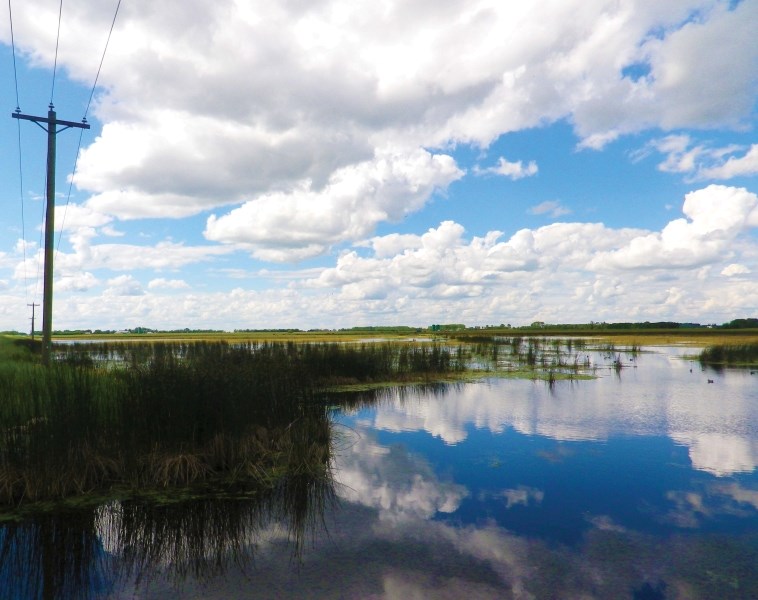Over the next three years, Alberta is investing $8.7 million to help municipalities and non-profit organizations restore wetlands as part of a long-term drought management plan.
The program will fund dozens of projects led by communities, conservation organizations and Indigenous groups to restore drained or destroyed wetlands, or construct new wetlands where they are most needed, Rebecca Schulz, Minister of Environment and Protected Areas, said at a news event on Wednesday.
"Investing in wetlands is a wise move as wetlands act like a sponge and provide a number of benefits in times of drought. They provide us an important source of water for both annual and forage crops, and they recharge groundwater stores and aquifers," said Jim Fisher, vice president of Canadian policy for Delta Waterfowl.
Because they pool water and slowly release flow to surrounding streams and rivers, wetlands are also recognized as an effective flood management tool, as well as being essential wildlife habitat.
Thanks to researchers and conservation groups, the value of wetlands is acknowledged more today, but for most of Alberta's history they were viewed as nuisance areas and drained to make room for agriculture, industry, or other development. It has been estimated that as much as 70 per cent of wetlands in southern Alberta have been lost, and between 0.3–0.5 per cent of wetlands in the province are lost each year.
Alberta's Wetland Replacement Program started in 2020, and has since restored 440 hectares of wetlands, according to the government of Alberta.
Minister Schulz said she is often asked whether restoring wetlands will help with this year's coming drought, but said that work doesn't happen that quickly. "But it is important for us to protect against drought and flood for future years to come."
Phillip Meintzer, a conservation specialist for the Alberta Wilderness Association, said he is supportive of the environmental restoration programs, but that there needs to be more effort to protect wetlands in the first place, "rather than allowing them to be destroyed and we need to actually then restore them."
Meintzer said Alberta's current wetland policy "provides fairly weak protections for wetlands." Under the policy, wetlands are assigned a relative value, largely determined by their relationship to a municipality, and those said to be high value are protected, while low-value wetlands aren't, he said.
"If there's a wetland that's upstream of a municipality, which may clean freshwater or buffer floods and that kind of thing, then it gets assigned a higher value. But that's really an anthropocentric approach. It's just looking at direct benefits to municipalities."
The McClelland Lake wetland complex, about 90 kilometres north of Fort McMurray, is one of the largest intact wetlands in Alberta. Its 6000 hectares includes a dozen sinkhole lakes, is home to 20 rare plant and animal species and an important stopover for migratory birds, and is estimated to store the equivalent of between eight million and 35 million tonnes of carbon dioxide.
In November 2023, Alberta's energy regulator approved Suncor's plans to mine half of the McClelland lake wetland area as part of its Fort Hills oilsands mine expansion.
"It's huge. It's a peatland. But it's not directly next to a community or municipality and it would get a lower value. So even though it stores tonnes of carbon and has huge importance for the biodiversity and ecosystems up there, it's not necessarily protected by this policy," Meintzer said.
Research has shown that "certain wetlands can be replaced, but whether or not you can ever achieve what's called like, equivalent land capability is that is still like uncertain," Meintzer said.
"Just because you can sort of put a wetland back into a given area doesn't mean it's going to be exactly what was there before. And different types of wetlands are more amenable to restoration."



